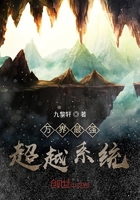THE CLIFF DWELLERS
In the canons of the Colorado river and its tributaries are found the ruins of an ancient race of cliff dwellers. These ruins are numerous and are scattered over a wide scope of country, which includes Arizona and portions of Utah, Colorado and New Mexico.
Many of them are yet in a good state of preservation, but all show the marks of age and decay. They are not less than four hundred years old and are, in all probability, much older. Their preservation is largely due to their sheltered position among the rocks and an exceptionally dry climate.
The houses are invariably built upon high cliffs on shelving rocks in places that are almost inaccessible. In some instances they can only be reached by steps cut into the solid rock, which are so old and worn that they are almost obliterated. Their walls so nearly resemble the stratified rocks upon which they stand, that they are not easily distinguished from their surroundings.
The cliffs are often sloping, sometimes overhanging, but more frequently perpendicular. The weather erosion of many centuries has caused the softer strata of exposed rocks in the cliffs to disintegrate and fall away, which left numberless caverns wherein this ancient and mysterious people chose to build their eyrie homes to live with the eagles. The houses are built of all shapes and sizes and, apparently, were planned to fit the irregular and limited space of their environment. Circular watch towers look down from commanding heights which, from their shape and position, were evidently intended to serve the double purpose of observation and defense.
In the search for evidence of their antiquity it is believed that data has been found which denotes great age. In the construction of some of their houses, notably those in the Mancos Canon, is displayed a technical knowledge of architecture and a mathematical accuracy which savages do not possess; and the fine masonry of dressed stone and superior cement seem to prove that Indians were not the builders. On the contrary, to quote a recent writer, "The evidence goes to show that the work was done by skilled workmen who were white masons and who built for white people in a prehistoric age." In this connection it is singular, if not significant, that the natives when first discovered believed in a bearded white man whom they deified as the Fair God of whose existence they had obtained knowledge from some source and in whose honor they kept their sacred altar fires burning unquenched.
The relics that have been found in the ruins are principally implements of the stone age, but are of sufficient variety to indicate a succession of races that were both primitive and cultured and as widely separated in time as in knowledge.
The cliff dwellings were not only the abodes of their original builders, but were occupied and deserted successively by the chipped stone implement maker, the polisher of hard stone, the basket maker and the weaver.
Among the relics that have been found in the ruins are some very fine specimens of pottery which are as symmetrical and well finished as if they had been turned on a potter's wheel, and covered with an opaque enamel of stanniferous glaze composed of lead and tin that originated with the Phoenicians, and is as old as history. Can it be possible that the cliff dwellers are a lost fragment of Egyptian civilization?
The cliff ruins in Arizona are not only found in the canons of the Colorado river, but also in many other places. The finest of them are Montezuma's Castle on Beaver creek, and the Casa Blanca in Canon de Chelly. Numerous other ruins are found on the Rio Verde, Gila river, Walnut Canon and elsewhere.
The largest and finest group of cliff dwellings are those on the Mesa Verde in Colorado. They are fully described in the great work[5] of Nordenskiold, who spent much time among them. The different houses are named after some peculiarity of appearance or construction, like the Cliff Palace, which contains more than one hundred rooms, Long House, Balcony House, Spruce Tree House, etc.
[5] The Cliff Dwellers of the Mesa Verde, by F. Nordenskiold, Stockholm. 1893.
He obtained a large quantity of relics, which are also fully described, consisting of stone implements, pottery, cotton and feather cloth, osier and palmillo mats, yucca sandals, weaving sticks, bone awls, corn and beans.
Many well-preserved mummies were found buried in graves that were carefully closed and sealed. The bodies were wrapped in a fine cotton cloth of drawn work, which was covered by a coarser cloth resembling burlap, and all inclosed in a wrapping of palmillo matting tied with a cord made of the fiber of cedar bark. The hair is fine and of a brown color, and not coarse and black like the hair of the wild Indians. Mummies have been exhumed that have red or light colored hair such as usually goes with a fair skin. This fact has led some to believe that the cliff dwellers belonged to the white race, but not necessarily so, as this quality of hair also belongs to albinos, who doubtless lived among the cliff dwellers as they do among the Moquis and Zunis at the present day, and explains the peculiarity of hair just mentioned.
These remains may be very modern, as some choose to believe, but, in all probability, they are more ancient than modern. Mummies encased in wood and cloth have been taken from the tombs of Egypt in an almost perfect state of preservation which cannot be less than two thousand years old, and are, perhaps, more than double that age. As there is no positive knowledge as to when the cliff dwellers flourished, one man's guess on the subject is as good as another's.














